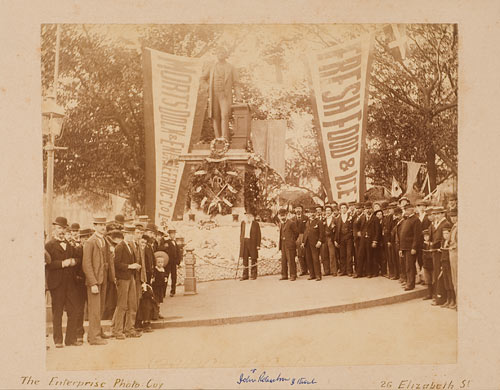Thomas Sutcliffe Mort
Thomas Sutcliffe Mort (1816–1878) arrived in Australia in 1838. He rose to prominence in the colony through his many commercial ventures and pastoral enterprises, and became one of Sydney's leading businessmen. By the end of the 1840s his fortune was made.
Mort was behind initiatives such as weekly wool auctions and the refrigeration of food. He was involved in moves for the first railway in New South Wales, and was also one of the founders of the AMP Society. Mort was also the founder of Mort's Dock at Balmain in 1854, which gave Sydney its first major dry dock for repairing ships.
> View photographs of Mort’s home and businesses
T.S. Mort was generous and public spirited. He was an active and prominent lay member of the Anglican church and the local community. He donated the land for St Mark's Church, Darling Point and commissioned Edmund Blacket to design it. Blacket also designed the renovations and additions to Mort’s own home, Greenoakes (later Bishopscourt).
> Examine the architectural plans for Greenoakes, the Mort family villa
Following T.S. Mort's death on 9 May 1878, a bronze statue, sculpted by Pierce Connolly, was erected in Macquarie Place, Sydney, as a mark of the esteem and respect in which he was held.
Thomas Sutcliffe’s younger brother Henry Mort arrived in Australia several years after Thomas and worked in Queensland as a pastoral company director. In 1855 he moved his family to Sydney, joining his older brother in the family business, Mort & Co. He was active in politics, and was elected to the Legislative Assembly in 1859-60, representing West Moreton. He was also a member of the Legislative Council from 1881-1900. His Sydney home on Darling Point was called Mount Adelaide and was designed by Edmund Blacket.
> Examine the architectural plans for Mt Adelaide, Henry Mort’s home
